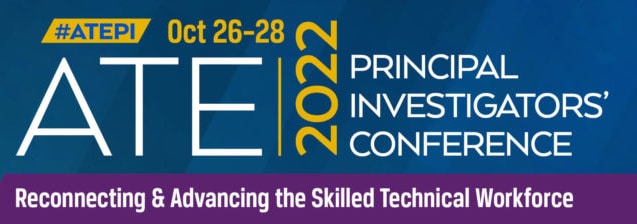Eboni Zamani-Gallaher knows that community college STEM educators are working hard to recruit students and more broadly to address gaps in achievement and earnings faced by women and people of color.

In her keynote speech delivered virtually on the last day of the 2022 Advanced Technological Education Principal Investigators’ Conference last week, Zamani-Gallaher urged educators to keep the needs of potential students in mind as they pursue their enrollment goals.
“How do we provide students with differentiated yet varied supports that are needed? It’s not a one-size-fits-all or that rising-tides-lifts-all-boats. The whole point of trying to provide equity in education is … equality,” said Zamani-Gallaher, a professor of higher education and associate dean for equity, justice and strategic partnerships at the University of Pittsburgh’s School of Education.

She cautioned community college educators about using terms that “minoritize” populations such as women and Black and Brown people who are actually the majority populations their institutions serve. She also advised using authentic photos in marketing materials.
Zamani-Gallaher, who describes herself as an advocate, cheerleader and critical friend of community colleges, asked “What is the value proposition for racially minoritized learners to continue postsecondary education?” She said it has to be about more than money, and it also has to recognize that people may have “scarring” from previous experiences that cause them to hesitate about pursuing STEM careers.
‘Face race’ in STEM recruitment
She suggested reframing the “achievement gap” as “an opportunity gap,” and bringing race consciousness into equity initiatives. Before starting at Pitt in July, Zamani-Gallaher was associate dean of the Graduate College and was associate head of education, policy, organization and leadership, and director of community college research and leadership at the University of Illinois Urbana-Champaign.
She encouraged the ATE community to “face race” in its efforts to recruit and retain students from populations historically underrepresented in the advanced technology fields that are the focus of the grants they receive from the National Science Foundation’s Advanced Technological Education program.
She pointed to Anthony Carnavele’s reports for Georgetown University Center on Education and the Workforce as evidence that racial, ethnic and class-based disparities “are more punctuated along the color line.”
More than a slick brochure
In response to a recruitment strategy question from V. Celeste Carter, ATE’s lead program director at NSF, Zamani-Gallaher said, “It’s not enough to have a slick brochure and the pamphlet with the great stock photos of very diverse folks, and then that not be the actuality.”
Nor, she said, is it sufficient to build programs and passively expect people to show up. She urged ATE principal investigators and their project and center staffers to think through their interactions with community-based boards and organizations within communities of color to inform potential students and their families.
“Where are you all going when you are doing your recruiting trips? … To what extent are you creating some authentic and bi-directional partnerships with majority-minority high schools and the CTE [career technical education] piece at the secondary level to think through how we can have accelerated pathways there utilizing dual credit and enrollment?”
And, she pointed out it should not be the responsibility of “female and folk of color that are faculty to do the recruiting.”
She concluded: “It’s really about being so much more deliberate and aggressive and building again, authentic, bi-directional relationships with various stakeholder groups, community-based organizations.”

